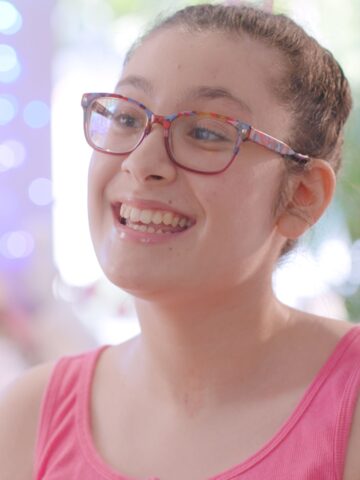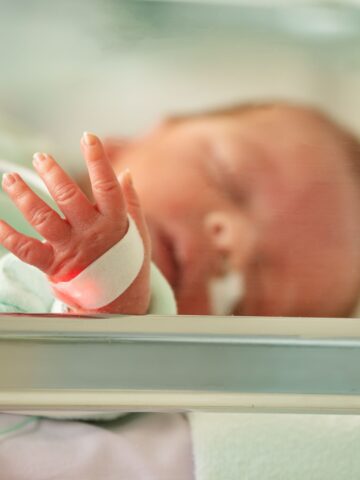CHOC pediatric infectious disease expert Dr. Erlinda “Chulie” Ulloa has a reputation for being relentless in her pursuit of answers when established treatment options aren’t helping patients.
It was this drive, colleagues say, that saved the life of a CHOC patient with acute myeloid leukemia (AML) who acquired a deadly infection elsewhere.
Through extensive drug testing in her lab and by tapping into a network of clinician scientists nationwide with whom she had developed close relationships during her medical training, as well as international colleagues who specialize in antibiotic-resistant infections like her, Dr. Ulloa was able to procure the necessary therapies for the 20-year-old.
And in doing so, Dr. Ulloa made history – both nationally and at CHOC.
A deadly skin infection
In early 2024, Dr. Ulloa’s patient, Melissa Anaya, became the first in the U.S. to receive an investigational medication that remains in clinical trials in Europe, as well as the first patient at CHOC to receive phage therapy.
Phages are naturally occurring viruses that attack pathogenic bacterial infections and offer an alternative when active antibiotics are no longer an option. They work by attaching to bacterial cells and injecting their genome into them. The bacteria’s production of the phage components eventually causes it to explode, releasing new phage particles that halt the infection.
Melissa was diagnosed more than a year ago with acute myeloid leukemia (AML) — cancer of the bone marrow. Early in her cancer therapy at another hospital, Melissa developed ischemia that required bilateral amputation. Surgeons had to amputate her left leg below the knee and remove part of her right foot.
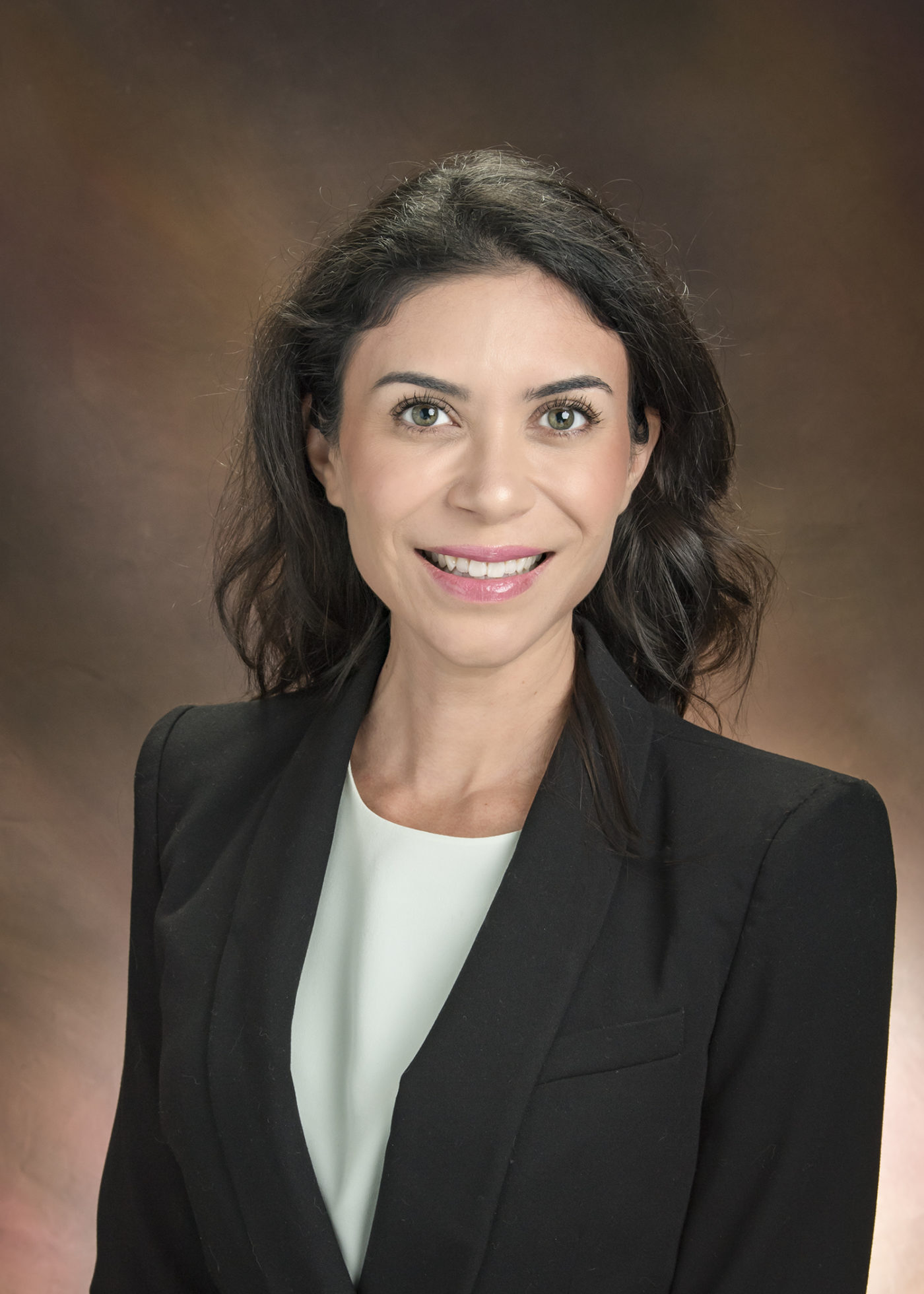
Later, she developed a serious skin infection due to a deadly pathogen believed to have been acquired at another hospital after she suffered cardio-respiratory collapse and had to be put on ECMO, a life-saving technology that takes over the heart’s pumping functions and the lung’s oxygen and carbon dioxide exchange.
Multidrug-resistant pathogens
Antibiotic resistance is a global problem and often children already debilitated by chronic illness are at significant risk of becoming infected with multidrug-resistant (MDR) pathogens.
Melissa acquired a deadly infection from MDRPseudomonas aeruginosa, a pathogen that poses one of the greatest threats to humans in terms of antibiotic resistance, according to the World Health Organization.
In 2017, MDR P. aeruginosa caused an estimated 32,600 infections among hospitalized patients and 2,700 estimated deaths in the United States, according to the Centers for Disease Control and Prevention.
“We don’t see it commonly in pediatrics, although the rates are increasing, particularly among chronically or critically ill patients,” Dr. Ulloa says.
Detective work
Dr. Ulloa engaged in detective work to find a solution for Melissa, who began developing mysterious skin lesions in November 2023 that became superinfected with MDR pseudomonas.
Dr. Ulloa had a high clinical suspicion for calciphylaxis, a rare condition that occurs when calcium accumulates in small blood vessels of the skin and fat, blocking blood flow and oxygen, resulting in painful skin lesions. Calciphylaxis, for which there are no proven therapies, often leads to open wounds that become infected and can lead to death.
Primarily located on Melissa’s outer thighs, the lesions became ulcerated and caused excruciating pain.
“It was a challenging medical case, and she was in a lot of pain,” said Dr. Ulloa, adding that at one point Melissa was telling her care team, “Let me die.”
Of course, Melissa’s mother and other loved ones wanted everything possible done to keep her alive.
A team of experts
One of the first steps was establishing the diagnosis of calciphylaxis, which Dr. Ulloa was able to do after obtaining a skin biopsy with the help of CHOC oncologist Dr. Hung Tran and pediatric pathologist Dr. Ali Nael Amzajerdi.
Between Christmas and New Year’s Day 2023, Dr. Ulloa got word from the Mayo Clinic that the pseudomonas samples she had sent were identified as containing a New Delhi metallo-beta-lactamase–1 (NDM-1) enzyme.
“Those enzymes are very rare to acquire in pseudomonas in the absence of travel — normally, you have to travel internationally to become infected,” Dr. Ulloa explains.
Dr. Ulloa searched online and found that the hospital in Los Angeles where Melissa previously had stayed recently had published a paper on the first case of a domestically acquired NDM-1-producing pseudomonas.
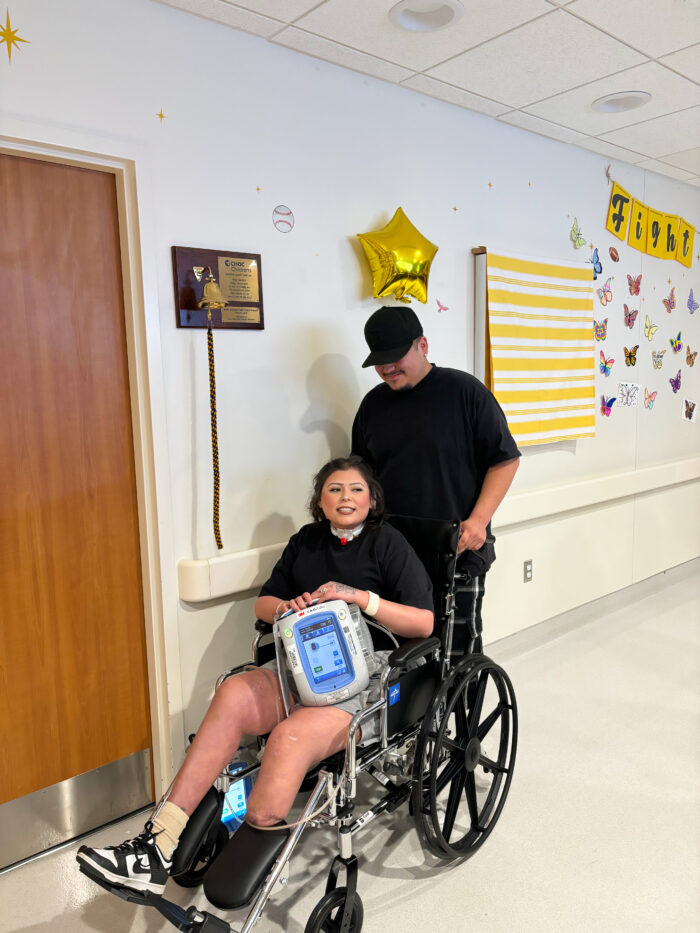
‘Please don’t let me die’
The treatment plan Dr. Ulloa came up with brought Melissa around.
“She started saying, ‘Please don’t let me die,’” Dr. Ulloa recalls.
Dr. Ulloa began administering the phages on March 1, 2024, topically and intravenously. Bandages drenched in phages were applied to the patient’s large lesions, but that technique became quite challenging.
So, Dr. Ulloa and the team resorted to administering the phages intravenously with the help of CHOC infectious disease pharmacist Tuan Tran, who was “key in determining the appropriate phage dose,” Dr. Ulloa says.
Dr. Ulloa also gave Melissa the experimental drug cefepime-zidebactam, currently in global phase-three clinical development. In addition, she started sodium thiosulfate, an emerging treatment for calciphylaxis that dissolves calcium tissue deposits to improve blood flow to the skin.
“We had to monitor her closely for adverse reactions, but she tolerated the treatments well,” Dr. Ulloa says.
Critical to Melissa’s healing was the work of CHOC plastic surgeon Dr. Daniel Jaffurs, who had to carve out dead and necrotic tissue and work diligently to promote wound healing.
“He went above and beyond and was instrumental to our patient’s recovery,” Dr. Ulloa says.
Dr. Ulloa treated Melissa for six weeks with the phages, which an academic center, Van Tyne lab at the University of Pittsburgh, provided to CHOC for free, and about the same amount of time with cefepime-zidebactam – which CHOC also received at no cost.
A team effort
Dr. Antonio Arrieta, medical director of pediatric infectious diseases at CHOC, notes that Dr. Ulloa was able to make available, in what he calls record time, the anti-pseudomonal phages for a patient who was going to die of infection.
Melissa recently completed treatment for calciphylaxis, says Dr. Ulloa. As an assistant professor in the Department of Pediatrics and Microbiology & Molecular Genetics at the UCI School of Medicine, Dr. Ulloa spends a lot of time in her UCI lab performing in vitro work with old and novel therapies to find viable treatment options for patients suffering from challenging infections.
Dr. Arrieta notes that oncologists – including the patient’s primary oncologist, Dr. Carol Lin – nurse practitioners and bedside nurses, in addition to Dr. Jaffurs, all played a critical role in Melissa’s recovery.
Melissa’s multidisciplinary team also included sub-specialists from orthopedic surgery, palliative care, ENT (otolaryngology), psychology/psychiatry and pulmonology, as well as physical and occupational therapists, the wound care team (SWOT), case coordinators and social workers.
“Our physicians, and all members of our care teams, are committed to search for newer, often groundbreaking, treatment modalities for our patients when established treatment options are no longer available,” Dr. Arrieta says.
Ringing the bell
On Sept. 17, 2024, after more than a year in the hospital and challenges that would try the hardest of patients, Melissa was discharged.
As loved ones and members of the CHOC care team looked on, Melissa’s fiancé, Abram Jimenez wheeled her to a bell hanging on the wall of the oncology unit at CHOC Orange. As is tradition, patients completing treatment are invited to ring the bell to signify the triumphant end of their journey.
Before she rang the bell, Melissa exclaimed, “If cancer can’t kill me, what can?”
Then she vigorously rang the bell as “Celebration” by Kool & The Gang blared from speakers.
The assembled group then sung, to the tune of “Happy Birthday,” “Happy Discharge To You!”
Dr. Lin was among the many on hand to cheer Melissa on.
“This bell-ringing ceremony was very special,” Dr. Lin recalls. “We spent a lot of time with Melissa, all the good times and the tough times — we went through everything. Over time, I developed a deeper relationship with her. She trusted our team and took our team’s advice to get to the next level of getting out of here and continuing her recovery.
“It was a lot of hard work in terms of her rehabilitation, getting her stronger, post all surgeries and chemotherapies that she needed.”
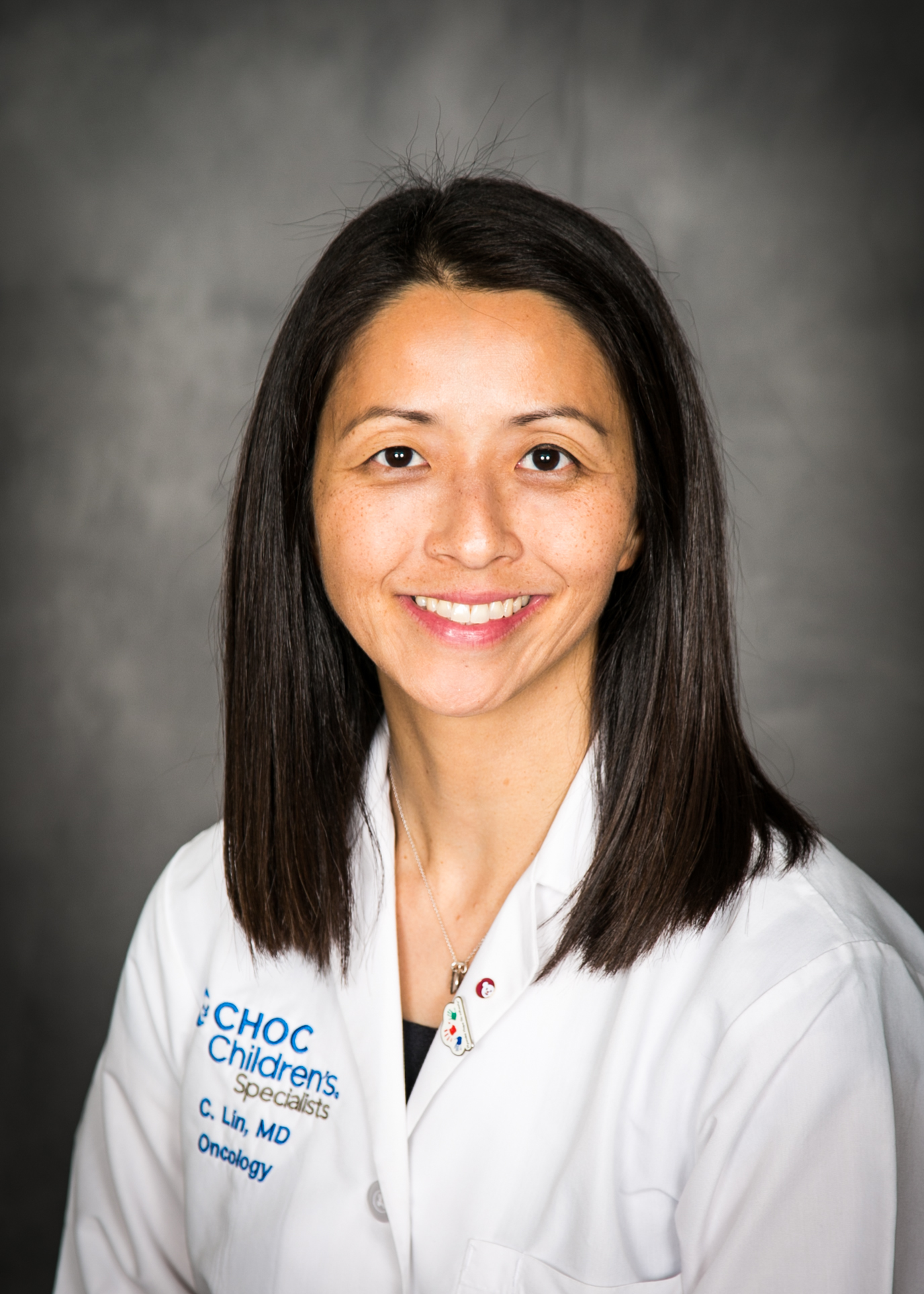
Hope and healing
Speaking at a recent check-up with Dr. Lin, who she continues to see every two weeks, Melissa said she doesn’t recall a lot of her time in the hospital.
“I feel like it was forever, but I also feel like it went by in a heartbeat because I don’t remember most of it,” she says.
Abram says the experience has been “a rollercoaster,” adding, “I prayed for her strength to get through it.”
Melissa’s chemotherapy ended a few months ago. In addition to Dr. Lin, she continues to see physical and occupational therapists, orthopedic surgeons, endocrinologists, and infectious disease specialists.
Melissa saw Dr. Jaffurs weekly for VAC (vacuum-assisted closure), a method of decreasing air pressure around her wounds to assist the healing. Her wound VAC was removed in mid-October 2024 and her wounds have completely healed.
Dr. Lin notes how difficult Melissa’s journey has been.
“It wasn’t easy for her to endure,” she says. “Eventually, she became incredibly determined to get through each hurdle with the help of her family members, fiancé, as well as our multidisciplinary team.
“We gave all of our energy to help her through this tough course of treatment and to get her discharged from the hospital, and we are so proud how far she has progressed.”


